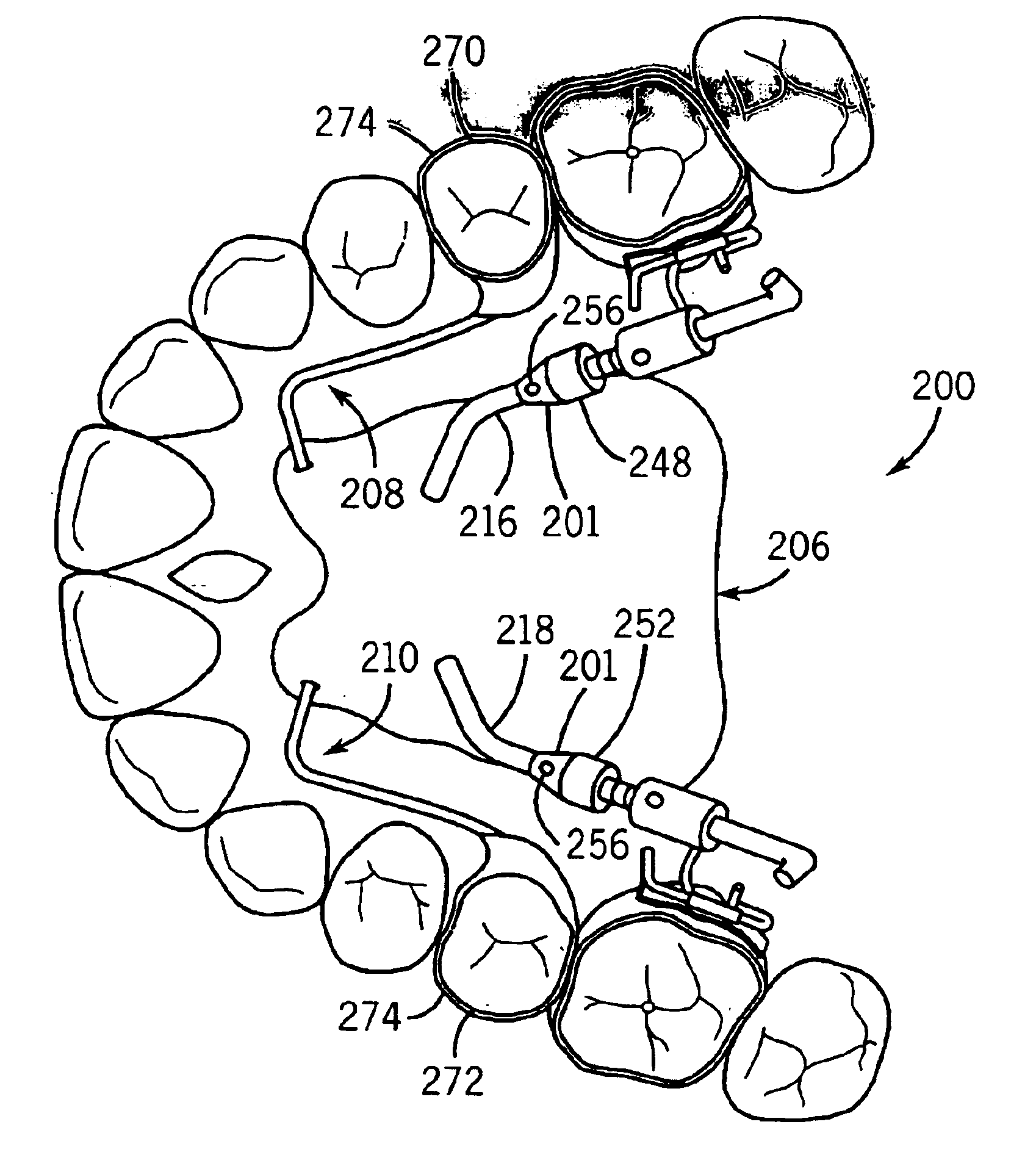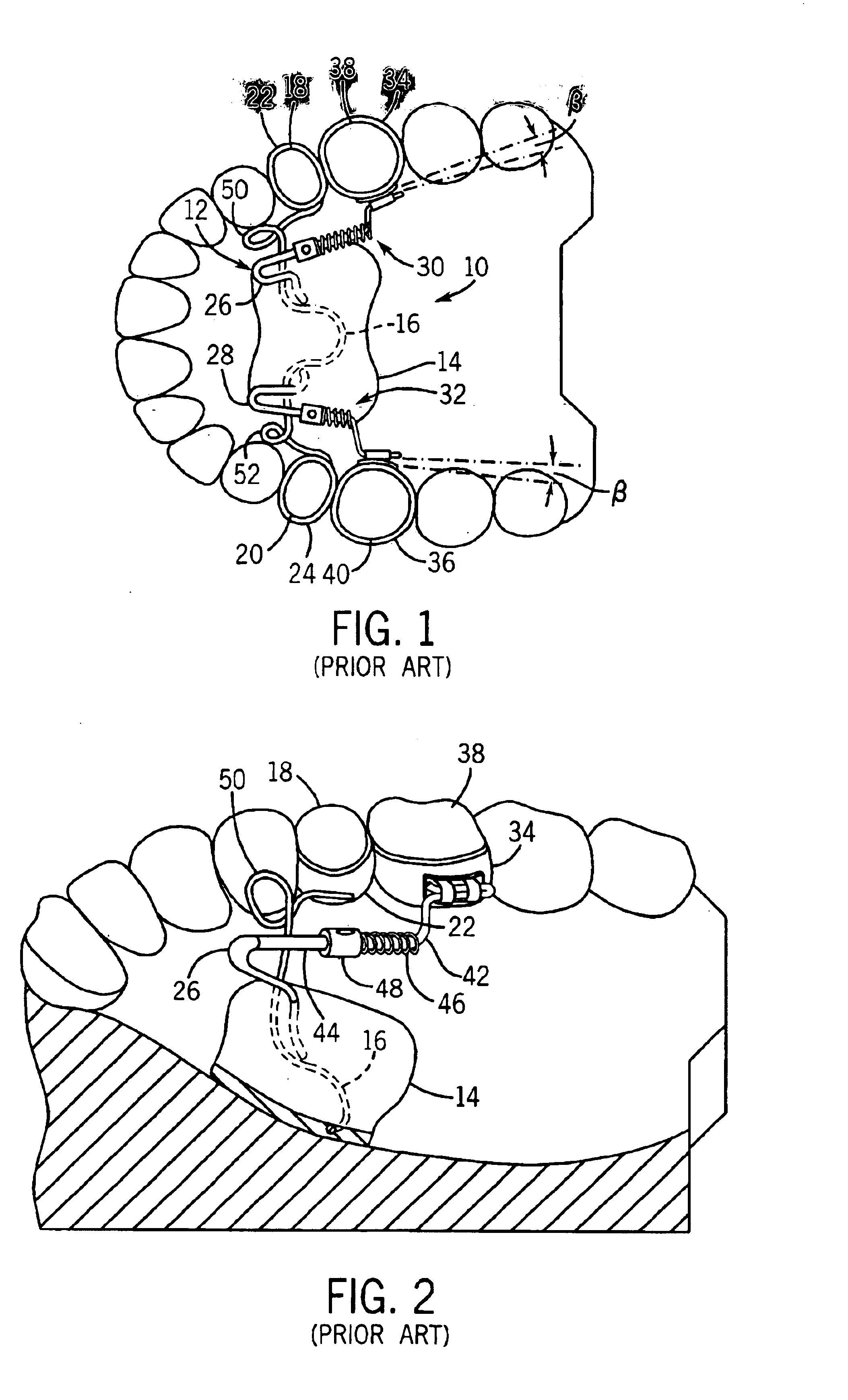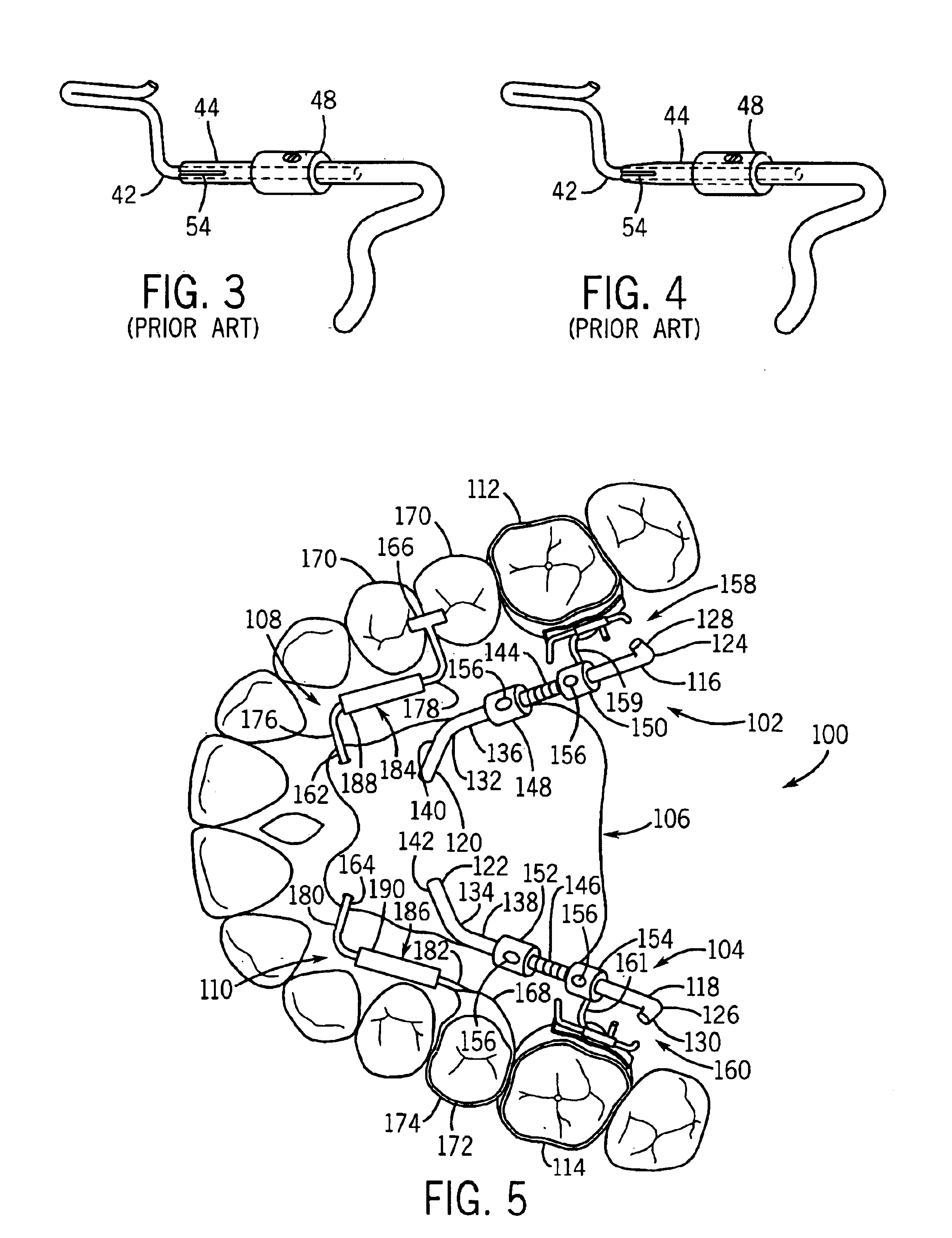Orthodontic distalizing apparatus
a technology of orthodontic devices and pusher pins, which is applied in the field of orthodontic distalizing devices, can solve the problems of causing displacement and the insufficient precision of the pusher pin on the tooth, and achieve the effect of avoiding displacement and avoiding dislocation
- Summary
- Abstract
- Description
- Claims
- Application Information
AI Technical Summary
Benefits of technology
Problems solved by technology
Method used
Image
Examples
first embodiment
[0034]Referring initially to FIG. 5, an orthodontic distalizing apparatus 100 in accordance with the present invention is shown mounted to a maxillary jaw. As illustrated, apparatus 100 generally includes a pair of force generating elements 102 and 104, a force dissipating element 106 (e.g., a Nance button) configured for engaging the hard palate and / or alveolar ridge, and a pair of anchoring elements 108 and 110. Each force generating element is preferably positioned and oriented to apply a distalizing force to a respective molar 112, 114 in a direction substantially along a longitudinal axis of the dental arch and at a low level of the basal gingiva. As explained in the '520 patent, applying forces at this low level and orientation causes the tooth distalizing forces to pass as close as possible to the center points of resistance of the molar 112, 114 being distalized, which minimizes risk of any undesirable tilting occurring during distalization.
[0035]In the illustrated embodimen...
second embodiment
[0043]Referring now to FIG. 6, an orthodontic distalizing apparatus 200 is shown. For brevity, the description of distalizing apparatus 200 will be generally limited to its differences relative to distalizing apparatus 100 described above. For convenience, elements of distalizing apparatus 200 that are substantially similar to corresponding elements of distalizing apparatus 100 will be identified by the same reference numerals but preceded by a “2” instead of a “1”.
[0044]Distalizing apparatus 200 differs from distalizing apparatus 100 described above in that each anterior spring stop 248, 252 comprises a generally cone-shaped collar 201 and a set screw 256. As best seen in FIG. 7, cone shaped collar 201 comprises a cylindrical base portion 203 and a conical portion 205. Conical portion 205 includes a threaded bore 207 which extends approximately perpendicular to the conical outer surface 217 and is thus at an angle relative to a central bore 209 that extends through collar 201 for s...
third embodiment
[0046]Referring now to FIG. 9, an orthodontic distalizing apparatus 300 is shown. For brevity, the description of distalizing apparatus 300 will be generally limited to its differences relative to distalizing apparatus 100 described above. For convenience, elements of distalizing apparatus 300 that are substantially similar to corresponding elements of distalizing apparatus 100 will be identified by the same reference numerals but preceded by a “3” instead of a “1”.
[0047]Distalizing apparatus 300 differs from distalizing apparatus 100 described above in that force dissipating element 306 is in the form of an osseointegrated (e.g., subperiosteal or endosseous) implant 311. Implant 311, which resembles a button, is a relatively flat, disc-shaped fixture having a threaded aperture 313 for securing thereto the mesial ends 320, 322 of guiding elements 316, 318 or another transpalatal member. Implant 311 is known as an “indirect anchorage device,” which is a term of art given to implants ...
PUM
 Login to View More
Login to View More Abstract
Description
Claims
Application Information
 Login to View More
Login to View More - R&D
- Intellectual Property
- Life Sciences
- Materials
- Tech Scout
- Unparalleled Data Quality
- Higher Quality Content
- 60% Fewer Hallucinations
Browse by: Latest US Patents, China's latest patents, Technical Efficacy Thesaurus, Application Domain, Technology Topic, Popular Technical Reports.
© 2025 PatSnap. All rights reserved.Legal|Privacy policy|Modern Slavery Act Transparency Statement|Sitemap|About US| Contact US: help@patsnap.com



